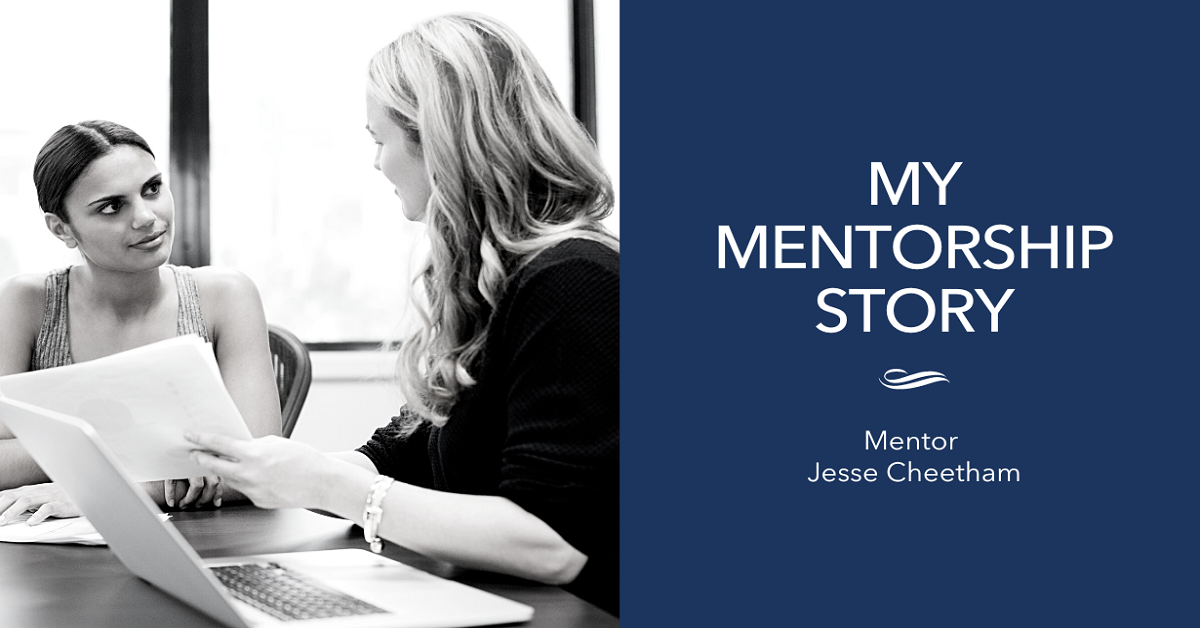
CPHR Alberta Mentoring Program: A 2-way Street

Author: Jesse Cheetham
As someone who has participated as both a protégé and mentor in the CPHR Alberta mentoring program, I can attest to the valuable two-way learning this opportunity brings. Not only did I learn a great deal from my mentors early in my career, I also found that my experiences and perspectives were valuable to them as well. When I transitioned to mentoring other HR professionals, I found I stayed curious and learned as much or more from them as they have from me. The program has been very rewarding, I encourage you to take part!
One of the key benefits of a mentoring program is the opportunity to learn from someone who has more experience in your field. An overlooked secondary benefit is the learning of new trends, fresh concepts, and mindsets that comes from protégé to mentor. This can be particularly valuable in HR, where our areas of responsibility are ever-growing and where the landscape is constantly changing.
What I have found most valuable as a mentor has been the opportunity to listen, be a sounding board, and learn while helping others navigate their HR journey. The learning through sharing of unique experiences and perspectives is of high value for HR professionals at all levels. By sharing experiences, a natural two-way dialogue ensues, that enriches the understanding of the HR field for all participants.
For example, a protégé was able to share some of the challenges they were facing in managing a employee relations in a different industry. I was was able to provide some guidance on how to address those challenges, and through this found their experiences and insights incredibly valuable. I was curious to learn more about how they and their peers were approaching work and what their priorities and concerns were. This was information that I might not have had direct access to otherwise, and it helped me to better understand the needs and perspectives of a key demographic.
Similarly, I was able to learn more deeply in emerging HR technologies and how they were being adopted. While I was familiar with some of these technologies, I was not as deeply immersed in them as the protégé was. By sharing experiences and insights, we were both able to better understand the implications of these technologies and how they might impact our current organizations and the field more broadly. Of course, the two-way learning in a mentoring program isn't just about sharing experiences and perspectives. It's also about building a relationship that is beneficial for both parties. Through our discussions, my mentors/protégé and I have been able to develop a strong rapport that went beyond just the exchange of information. We felt comfortable sharing our thoughts and opinions with each other, and we were invested in each other's success.
Creating a Safe Space for the Mentorship Relationship:
- Establish boundaries – what are you comfortable discussing, what are you not comfortable discussing?
- Establish confidentiality – whatever is shared is confidential. Then PROVE it. Nothing builds trust faster that doing what you say you will.
- Set intentions for each meeting and any take-aways or homework for next meeting.
- Stay curious and genuine. Be interested in your mentor/protégé and their success.
- LISTEN before recommending. It’s easy to jump into recommending but wait and listen first.
- Build bridges with helpful connections for your mentor/protégé.
Another way that these mentoring relationships have been beneficial for me was in terms of networking. Initially, my mentors were well-connected in the field, and they were able to introduce me to other professionals who could provide me with additional guidance and support. Through these introductions, I was able to expand my network and learn even more from others in the field. As a mentor myself, the organic networking has continued. Through focusing on connecting the proteges with my network, the result has been improved relationships, leading to deeper connections expanding my network. This networking has been very valuable, especially for introverted folks, like me.
Overall, my experience of open, two-way learning in the CPHR Alberta mentoring program has proven incredibly valuable and rewarding. While I certainly learned a great deal from my mentor(s), I have also found the shared experiences and perspectives from protégés equally valuable. By creating a safe space and engaging in open two-way dialogue as both protégé and mentor, I have been rewarded with deeper understanding of the HR field, emerging trends, outside the box ideas, and strong, beneficial connections while giving back to the HR community.
If you have the opportunity to participate in the CPHR Alberta mentoring program, take the plunge, you won’t regret it.
The views and opinions expressed in this blog post belong soley to the original author(s) and do not necessarily represent the views and opinions of CPHR Alberta.
The views and opinions expressed in this blog post belong solely to the original author(s) and do not necessarily represent the views and opinions of CPHR Alberta.





